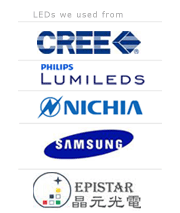News
Search
Popular search



17 Feb 2012
Mexico Proposes New Energy Efficiency Standards for LED Lamps
Mexico’s Ministry of Energy is seeking comments by 20 March on a proposal to establish new mandatory minimum energy efficiency standards, test procedures, sampling, conformity assessment and labelling requirements for light-emitting diode lamps for general lighting purposes. The proposed standard (PROY-NOM-030-ENER-2011) would require integrated omni-directional LED lamps in A, BT, P, PS and T bulb shapes, as well as LED lamps with an undeclared bulb shape, to comply with a minimum luminous efficiency of 50 to 60 lumens per watt. Integrated omni-directional LED lamps in BA, C, CA, F and G bulb shapes would have to comply with a minimum luminous efficiency of 40 lumens per watt. Directional LED lamps with BR, ER, MR, PAR and R bulb shapes would have to comply with a minimum luminous efficiency of 40 lumens per watt in the case of lamps with a diameter no larger than 6.35 centimetres and 45 lumens per watt in the case of lamps with a diameter higher than 6.35 cm.
The measured total luminous flux of directional and integrated omni-directional LED lamps may not be less than 90 percent of the nominal value marked on the product. LED lamps would also have to comply with a correlated colour temperature ranging from 2,700 to 6,500 as well as a minimum sustained luminous flux ranging from 83.2 percent for lamps with a nominal useful life of less than 15,000 hours to 95.8 percent for lamps with a nominal useful life of 50,000 hours or more. LED lamps would have to meet various other provisions and required test procedures would include a thermal shock resistance test and a switching test.
In addition, the proposed standard would require LED lamps to be marked with such information as the name or brand of the producer or seller, certain electrical information (e.g., nominal input voltage, frequency, electric power, power factor and electrical current), and the date or code that identifies the period of manufacture. The packaging would have to include such information as the country of origin, the name and address of the domestic producer or importer, certain electrical specifications, and the bulb type and type of spatial distribution of light.



